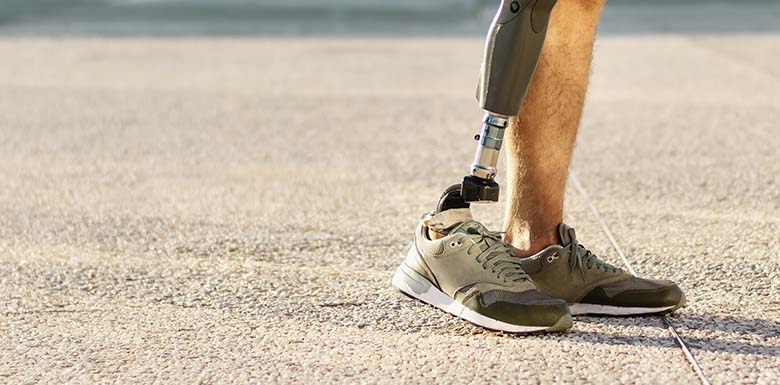Amputations are some of the most debilitating on-the-job injuries. Whether you suffered from a partial or total amputation, when the negligent actions of another caused your injuries, you may be entitled to compensation for every loss. Our New York amputation lawyers can help evaluate your case.
How Common Are Machinery & Work-Related Amputations?
Amputations involving machinery at work may not occur with alarming frequency, but they do cause significant injuries. In fact, according to the Bureau of Labor Statistics, work-related amputations could result in an average of 31 days off of work. This is an increase from the average nine days of work for other types of work-related injuries.
In fact, recent records report approximately 58% of work-related amputations involved machinery, tools, and other equipment. As much as 57% of all workplace amputations occurred in the manufacturing industry.
Some common reasons for these work injuries include:
- Failure to wear the necessary protective gear
- Lack of sufficient mechanisms to guard heavy machinery
- Faulty mechanisms to guard heavy machinery
- Unskilled, inexperienced, or untrained employees operating heavy machinery or equipment
- Heavy machinery operators’ failure to adhere to OSHA safety regulations and guidelines
What Types of Machinery Are Most Common in Workplace Amputations?
Machinery amputations occur in a variety of ways. No matter what type of work accident caused your amputation, you may have the right to compensation for your damages through worker’s comp or a third-party liability claim.
However, some types of machinery cause workplace amputations more often than others. According to OSHA, these pieces of equipment and heavy machinery include:
- Milling machines
- Food slicers
- Power press brakes
- Mechanical power presses
- Roll forming and roll bending machines
- Meat grinders
- Meat cutting bandsaws
- Powered and non-powered conveyors
- Printing presses
- Drill presses
Faulty machinery parts could cause equipment to break down and malfunction, resulting in an amputation. If this happens, parties responsible for inspecting these parts, purchasing these parts, manufacturing these parts, or selling these parts could be held accountable. Our heavy equipment accident lawyers can help identify your legal options.
How Do Machinery & Work-Related Amputations Occur?
Machinery and work-related amputations mainly occur because of inexperienced workers. However, anytime your employer’s negligent—whether due to a failure to make necessary repairs, provide staff with working equipment, or supervise the use of heavy machinery—they could also be held accountable for your damages.
Common Places for Work Amputations
Work amputations occur in virtually any industry; however, they may occur in some lines of work more than others. Professions with an increased risk for work amputations include:
- The manufacturing industry
- Construction Worker Injuries
- The agriculture industry
- The transportation industry
- The milling industry
- The public utilities industry
How Do You Collect Compensation for a Work-Related Amputation?
You may be entitled to compensation across multiple avenues when you suffer an on-the-job amputation. For example, you may be eligible for workers’ compensation benefits, which could consist of:
- Coverage of your healthcare costs and medical expenses
- Disability benefits designed to replace a portion of your missing income
- Vocational rehabilitation benefits if you need to obtain further job training to re-enter the workforce
- Death benefits to surviving family members of fatal amputations
Third-Party Liability Claims
However, you may have the opportunity to file a third-party liability claim if your worker’s compensation benefits do not provide sufficient coverage or the liable party does not have insurance coverage. Note that collecting workers’ comp prevents you from suing your employer through a personal injury claim.
Liable Parties in Machinery Amputations at Work
You might have no choice but to pursue a third-party liability claim for some workplace amputations. Multiple parties could share fault for your machinery amputation, such as:
- Machinery inspectors
- Your employer
- Your colleagues
- Machinery parts manufacturers
- Machinery distributors
- The owner of the machinery or equipment
Your attorney must prove that the defendant’s negligence was the cause of your workplace amputation. Suppose the liable party failed to maintain the machinery properly, make necessary repairs, or use the equipment as intended. In that case, it increases the risk of the machine breaking down and the likelihood of a work injury such as an amputation.
Get Help From a New York City Work Injury Lawyer
You could feel helpless dealing with the aftermath of a catastrophic amputation caused by machinery at work. Reach out to our experienced New York City work injury lawyers at Hecht, Kleeger & Damashek, P.C.
You could collect compensation through a civil claim or workers’ comp benefits when you contact our office for a no-cost, risk-free consultation. Contact us by phone at (212) 490-5700 or through our quick contact form to get started.

